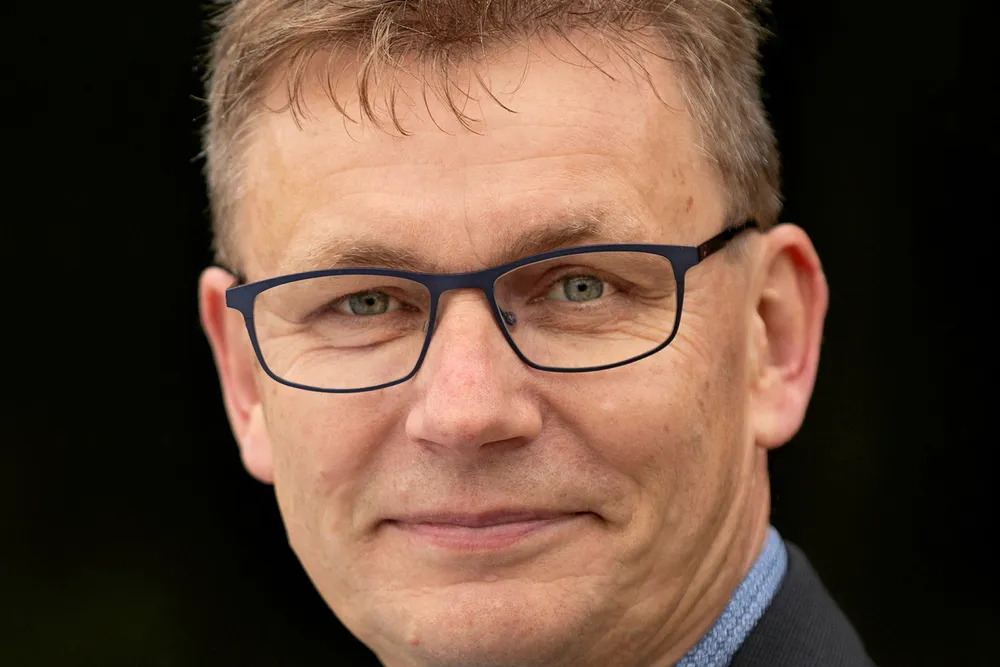CIP takes stake in Stiesdal Offshore as Danish pair bank on bright future for floating wind
CIP investment signals expansion for floating pioneer and vote of confidence in sector

Danish investment firm Copenhagen Infrastructure Partners (CIP) has acquired a minority stake in floating wind technology specialist Stiesdal Offshore, launching a strategic partnership intended to propel the latter into a leading position in the sector.
The size of the investment by CIP’s Copenhagen Infrastructure V fund was not disclosed, but Stiesdal Offshore said it would underpin a plan to expand the scope of its own business from one of designing and developing floating foundations to becoming "a one-stop shop for floating wind enablement".
The project, which was carried out in partnership with TEPCO, Shell and RWE, was conceived as the world’s first full-scale demonstration of an industrialised floating wind foundation.
The platform was designed to be assembled quayside, mated with turbines and towed-out to site for mooring and commissioning. An innovative ‘keel’ feature allows units to be constructed in shallow-water ports and installed in deep water with the stabiliser lowered.
Lean and mean
The new partnership with CIP is also intended to take the TetraSpar concepts of lean manufacturing, assembly and installation processes further.
Boosted by CIP’s investment, Stiesdal Offshore, which was founded by wind power pioneer Henrik Stiesdal, said it plans to launch a raft of innovative development initiatives aimed at achieving the cost reductions necessary to enable the floating wind market to grow.
So far, the company has come up with 31 initiatives, including several addressing the challenges of scaling up the production of floating wind technology and others relating to mooring, cables and transport and installation.
“The (CIP) investment will enable us to accelerate these efforts and strengthen our market position as we prepare for large-scale commercial deployment of floating offshore wind in the coming years," said Stiesdal Offshore CEO Peder Nickelsen.
“Turbine integration is a key area of focus, as we look at how to optimise the interface between foundation structure and turbine. We have gained a lot of experience along the way, including performance modelling," he said
The aspiration to become a one-stop shop for floating offshore wind projects, extends to willingness to diversify beyond the range of Stiesdal's own hardware.
"We are always working to improve the hardware itself but we are also working a lot on the interfaces,” he said. “As a one-stop shop for floating offshore wind projects, the company will offer owners engineering solutions regardless of foundation technology."
Faster and cheaper
Some of the work on mooring and cables can be seen as a response to the growing number of floating wind projects in relatively shallow waters, thus demanding closer scrutiny of the interfaces of both mooring and cables to ensure that loads on shorter lines are minimised, with strong implications for costs.
"We are working with various solutions to optimise this in a cost effective way," Nickelsen commented.
There has also been a continued focus on lean construction, based on an assumption that developers will largely need to make the most of existing supply chains inherited from the bottom-fixed market, at least until a more decisive wave of infrastructure investment materialises.
This includes a continued leaning toward what Nickelsen describes as "cylindrical members which can easily be automatised and hence are low cost in terms of steel per kilogramme".
The same logic points to manufacturing in an automatised plant with only the simpler final assembly work done at quayside "to enable fast and low risk assembly without complex operations like welding or painting and by the use of available equipment and skill-sets".
"This is highly important for the larger projects to facilitate installation within good weather seasons," Nickelsen added.
Vote of confidence
Under the one-stop plan, Stiesdal Offshore announced that it wants to offer full-service project support and execution, through what is described as “active engagement on every aspect of floating wind projects”.
It said it would continue to pursue innovation through a “proactive engagement” with wind turbine manufacturers, certification bodies, and other contractors and suppliers across the floating wind project lifecycle, “aiming to provide viable project outcomes and significantly reduce project risks for clients”.
“The aim is to help customers reduce the cost and complexity of projects and to accelerate the development of floating offshore wind,” the company stated.
CIP’s investment in Stiesdal Offshore also amounts to a vote of confidence in the wider potential of a floating offshore wind sector that has struggled to bring down levelised costs of energy in the face of industry-wide headwinds.
Most backers of offshore floating wind agree that this is a sector that needs to see concrete examples of cost-efficient scaling up of the technologies that have emerged so far.
"We remain committed to floating offshore wind which we believe will play an important role in the global energy transition, said ,” said Michael Hannibal, a partner at CIP.
“This investment is a next step in our pursuit of large-scale floating wind projects and together with Stiesdal Offshore we look forward to working towards advancing floating wind technology, overall project execution and cost reduction.”
In their joint statement, the partners cited International Energy Agency (IEA) predicting that floating wind is expected to grow significantly in 2030-2040 and has the potential to increase the global offshore wind resource by a factor of 10.
Nickelsen said his company would benefit from CIP's "financial strength and the global footprint of its projects".
(Copyright)